I’m always saying that if a gap in the market is obvious to one OEM, it’s obvious to all of them. Generally, if a manufacturer comes out with a segment-busting new model that sells like gangbusters, their rivals usually sit up and take notice. A while back the internet whipped itself into a frenzy over the ‘twenty thousand dollar’ Slate pickup truck, so does Ford’s big announcement yesterday that they are going to build a $30k truck mean they think there’s merit in the small, simple EV pickup idea, despite the small matter of Slate having not actually built the damn thing yet?
Ford didn’t specifically mention the Slate truck in their announcement, although they did cast a little shade in their direction by saying, “This isn’t a stripped‑down, old‑school vehicle.” I’ve not seen any of the Slate prototypes. At the Car Design Event in Germany I attended earlier this year, the chief designer was present, so I was hoping a truck would be as well, but all we got was a few 3D-printed scale models. I think I upset her by letting her know what I thought of the Slate website, but I remain unconvinced that a stripped-back, two-door, two-seat modular vehicle with wind-up windows will do the volumes necessary. Aside from the fact that mainstream customers have historically not liked bare-bones vehicles, the modular construction sounds like an NVH nightmare, something that will be exacerbated by EV propulsion because you will hear every single squeak and rattle. It all feels too much like the car internet enthusiasts SAY they want but won’t buy.
![]()
So it’s not surprising Ford is aiming for a higher price point. That ten-thousand-dollar price delta is going to give them room to maneuver to create a four-door truck with wider mainstream appeal that stands a much better chance of succeeding. They’ve already got their eye in with the Maverick, which, aside from some initial availability issues, has been a massive success. They’ve been building and selling trucks for decades, so they have mountains of customer research to base their decision on, which is always a better bet than basing your design on just vibes.
Plug And Play For Cars
Ford made a big deal about a new modular EV platform, but they are overegging the pudding a bit here. It’s been a long time since platform sharing meant a common floor pan and power trains. These days, a platform really refers to a common kit of parts and systems – not just suspension, engines, and gearboxes, but things like safety systems, HVAC, instrumentation, comfort and convenience features – basically anything under the skin can be shared.
Underlying structures can be manipulated for length and width with very few restrictions; usually, the firewall represents one of the very few fixed points that cannot be altered. The Maverick shares its C2 platform with the last generation Focus to give you an idea of how much can be changed. Variations of Jaguar Land Rover’s D7 platform underpinned nearly everything it built on both sides of the business until the Jags were culled last year. Volkswagen’s MEB platform is underneath all their electric ID cars (all variations of the same boring theme, I grant you), but also the new ‘Capri’ and the euro EV Explorer. So don’t be too dazzled by this part of their statement.
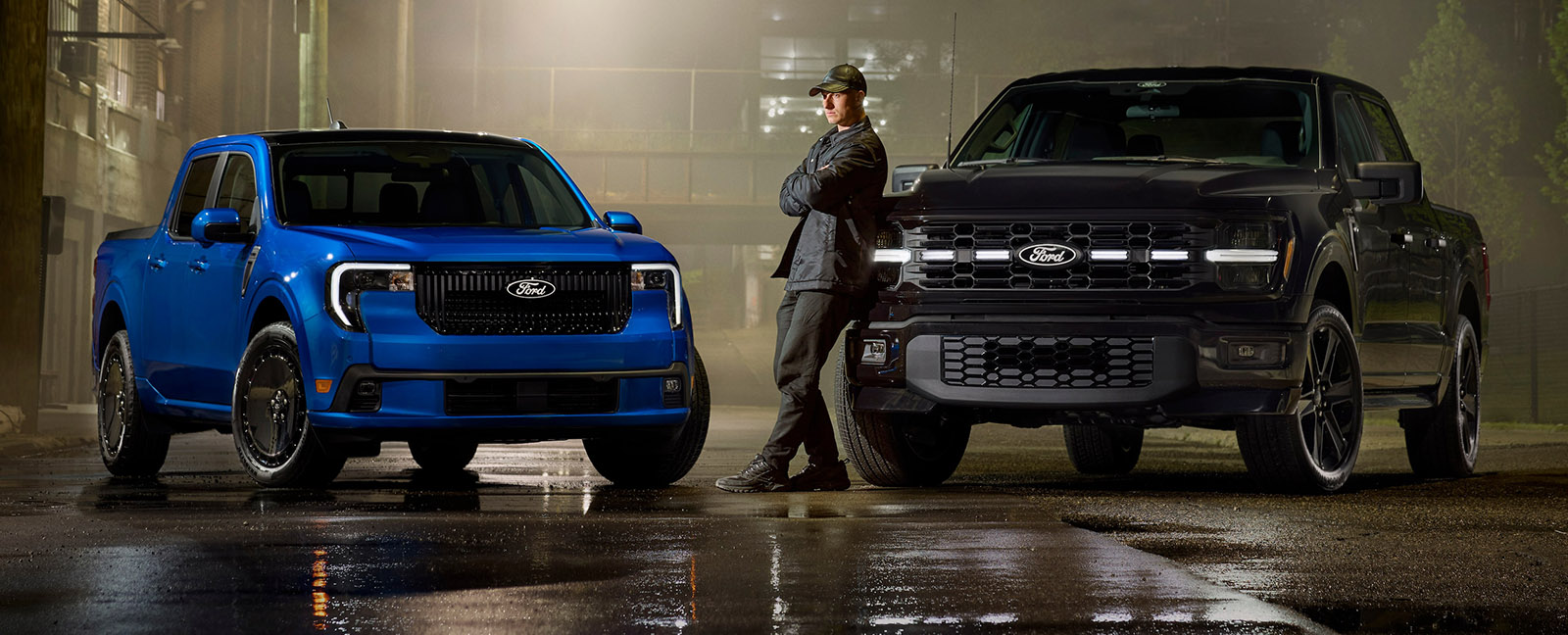
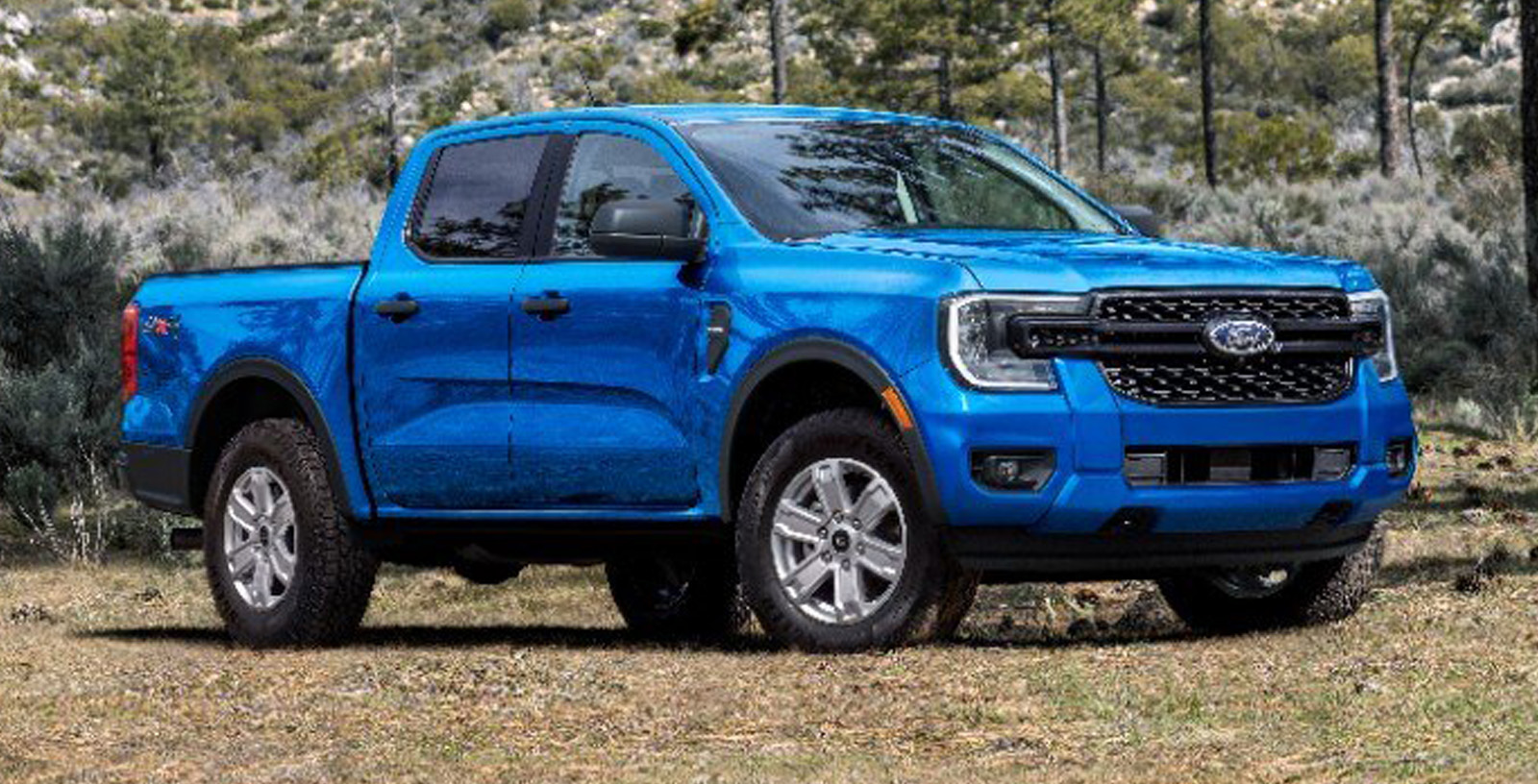
Whether they are aiming to blow the Slate out of the water or not, it’s clear Ford thinks they have room in their range for another truck. The Maverick is car-based for people who wouldn’t normally consider a truck but want to look cool or need the occasional utility. The Ranger is a smaller body-on-frame truck that’s available in the rest of the world (something which is beyond Toyota), and there’s the evergreen, full-size F-150 in ICE and EV versions. And so, an EV Maverick-type truck makes a lot of sense because the C2 platform is not capable of being electrified.
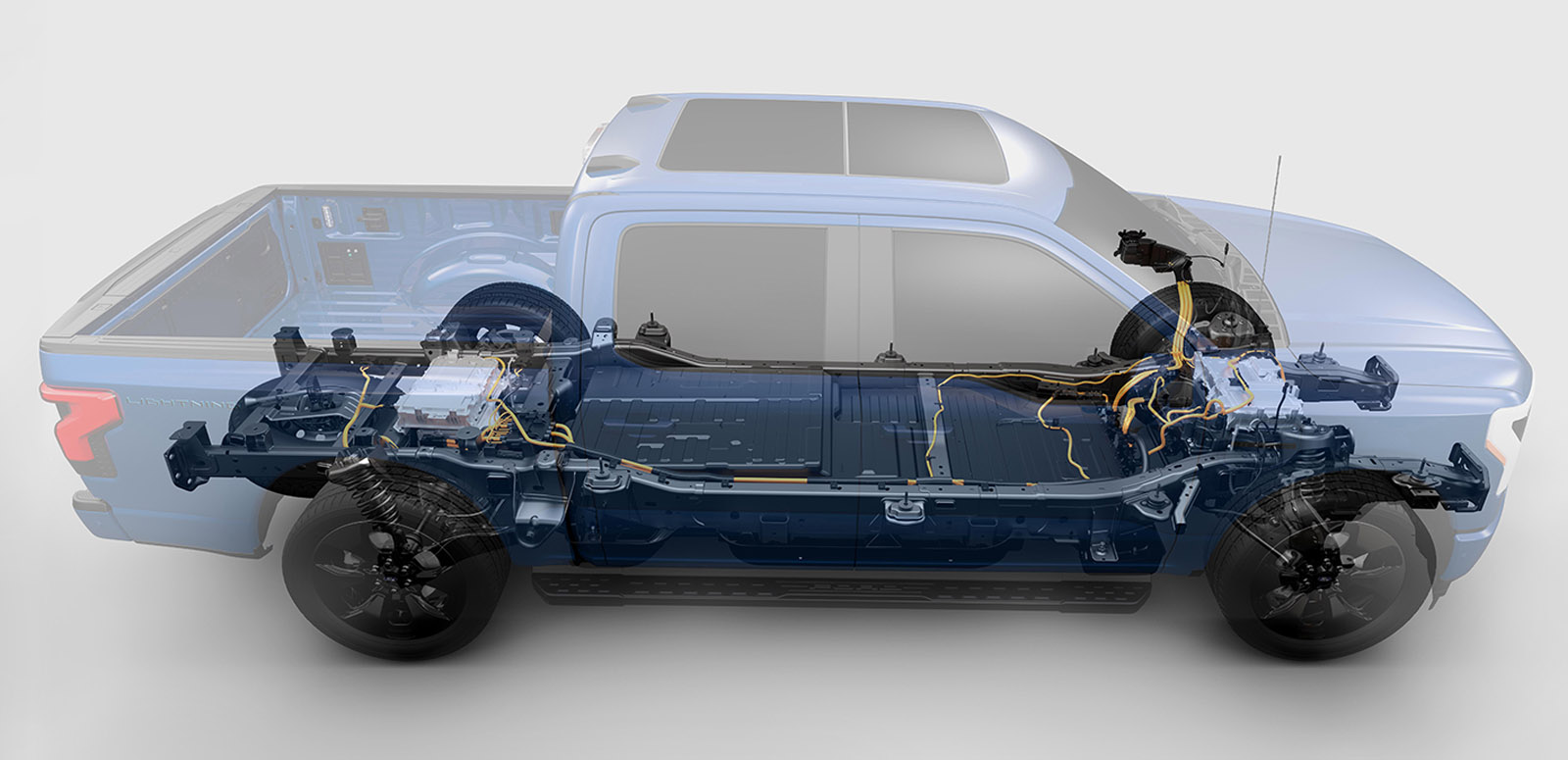
With the F-150 Lightning, they simply took the existing truck, yanked out the engine and gearbox and stuffed the space between the frame rails with batteries. It sounds like a compromise, but this approach has benefits. It’s more cost-effective because you are not designing and building a whole new platform (which costs billions of dollars), and it remains the familiar body-on-frame F-150, which is important for those customers.
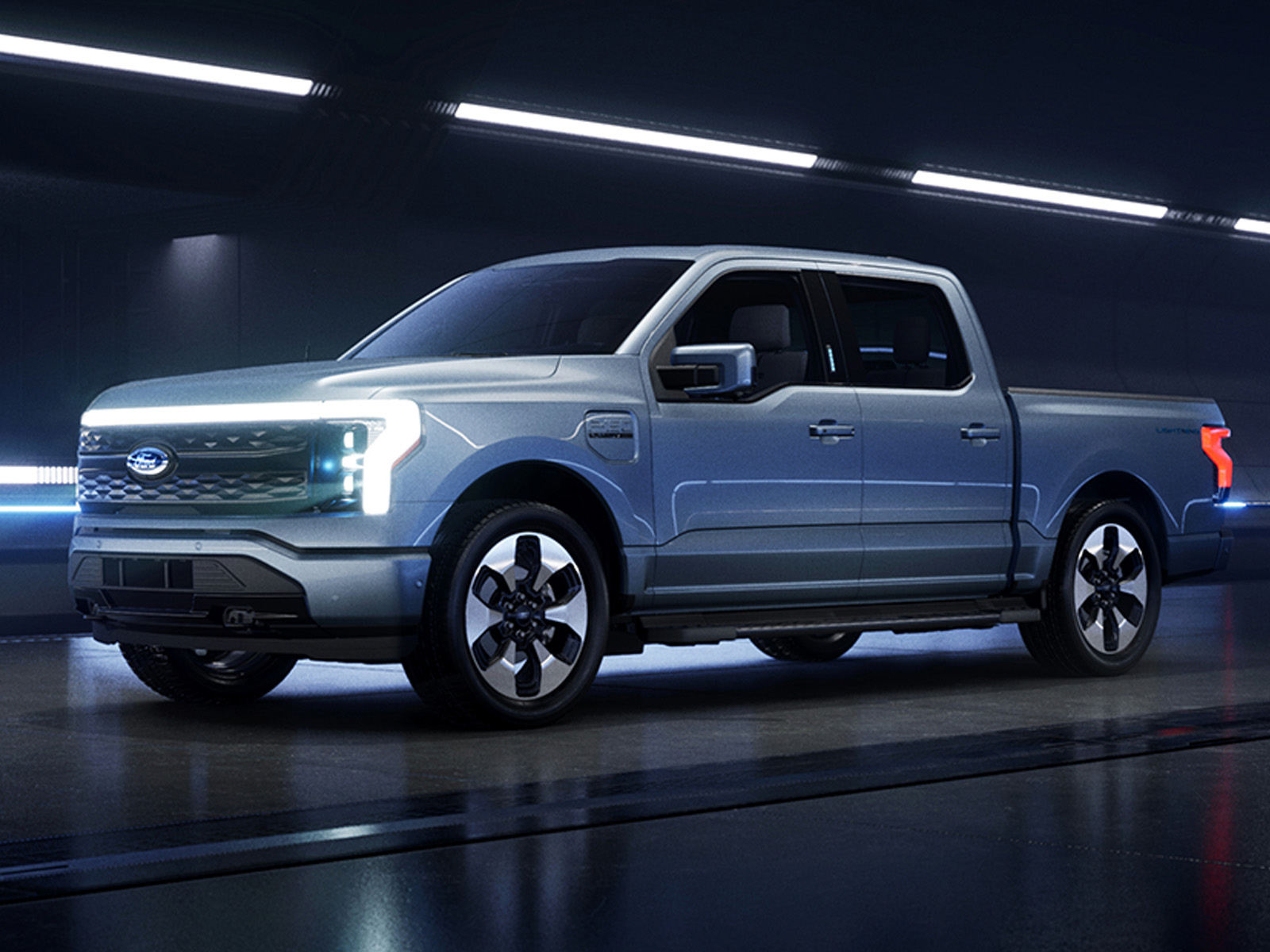
Aero And The Bill Of Materials
The headline-grabbing $30k price point for the new truck is going to take some cute engineering to hit. It’s extremely likely that part of the problem with the Maverick was Ford initially underpricing it – they won’t make that mistake again. It’s a safe bet this new truck is not going to be aimed at the heartland F-150 customer, so what do we think it could look like? I’ve written before about how fewer and simpler parts help lower the Bill of Materials (the total cost of all the parts in a car), but here we must deal with the specter of aerodynamics. Aero efficiency is more important for electric vehicles because it makes up something like 80% of their overall efficiency. With ICE vehicles, this number is much lower at around 30%. So even though a truck might not appear to be the most aerodynamic shape, the reality is aero count is gained and lost by things like flushness, sealing, and as few openings as possible. Another factor to consider is that drag doesn’t really come into effect until about 40-50 mph. The Lightning’s drag coefficient doesn’t seem to be available, so it’s probably not particularly good, but the Defender (which is an apartment block) has a Cd of 0.38.
Here’s a side view of what I think the new Ford EV truck could look like. I started off using the Maverick as a base and then extended the bed rearwards. We don’t know if it will have a bigger bed or not, but Ford mentions being able to “lock your surfboards or other gear in that bed – no roof rack or trailer hitch racks required.” I watched Point Break the other evening, and that’s about the extent of what I know about surfing, but a quick Google reveals boards seem to start at about seven feet long. Maybe the new truck is going to have some sort of midgate?
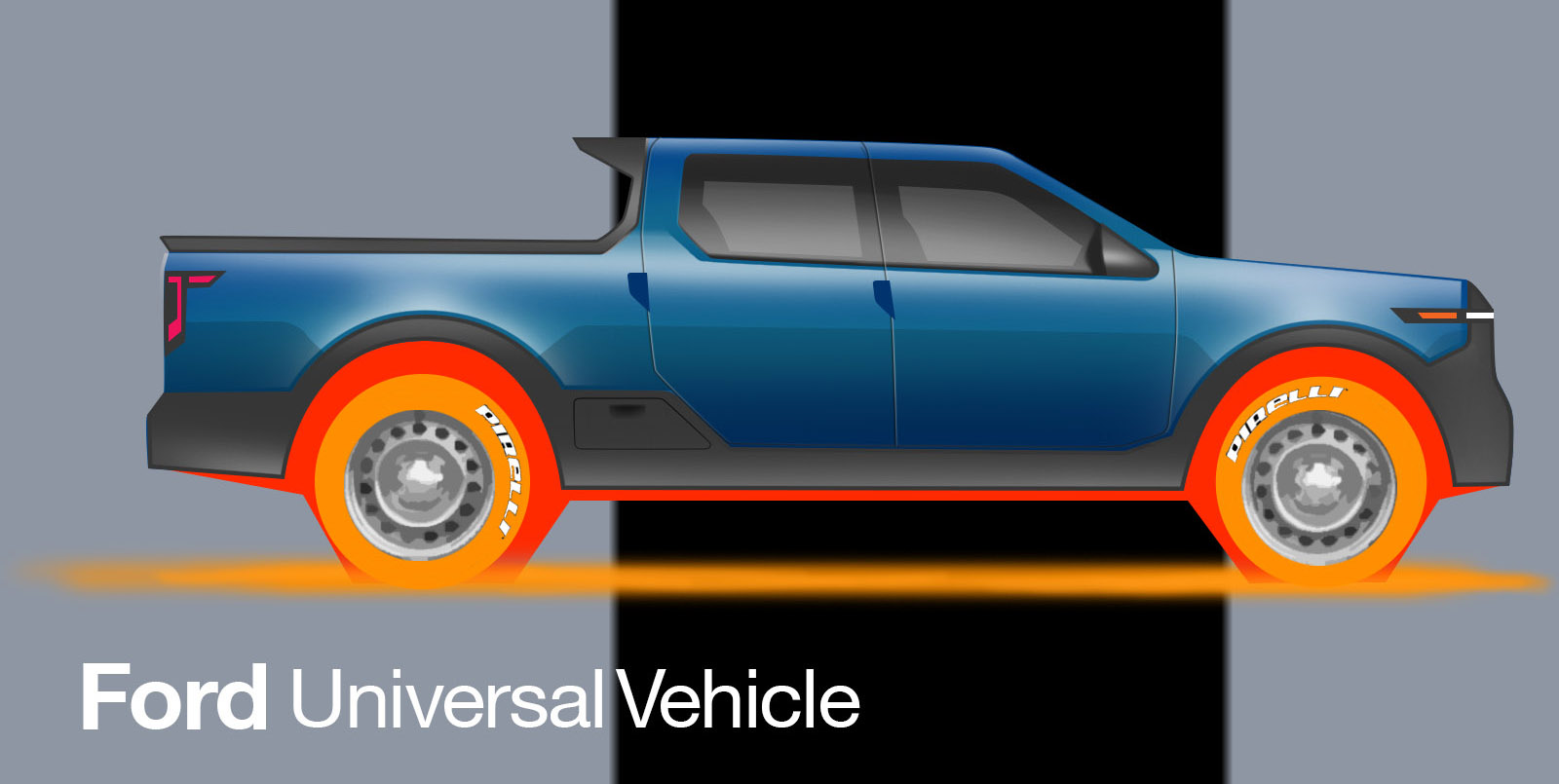
Another thing Ford specifically mentioned was a frunk, so I’ve pulled the nose forward a bit to make sure there’s enough real estate for one. What this also allows us to do is pull the base of the A-pillar forward so the windshield can be laid back for better aero, a trick GM pioneered with the third-generation F-bodies.
People complain about pop-out door handles being an unnecessary complication, but they do provide an aero benefit (flushness, remember) andan element of what design wankers call “surprise and delight.” However, here they’d be an extravagance considering the truck’s low base price. And so, I’ve stolen the recessed door handle idea from the OG of smart cost saving, the 1980 Fiat Panda. Seeing as we’re building on an all-new EV platform, we know the battery will form a structural element in the floor, so I’ve added a small locker to utilize the space between the rear doors and wheel arch. Into the bed molding, I’ve added a small spoiler to help the air flow off the back of the cab.
As you can see, there’s a lot of unpainted polypropylene around the base of the truck, and I’ve incorporated it into the front facia as well. This means less cost because you don’t need to paint it, and smaller, simpler body stampings. I’ve also made the doors a big one-piece stamping that runs all the way up to the roof and A-pillar, saving additional stampings to cover these areas. This is similar to what Dacia does, another low-cost car.
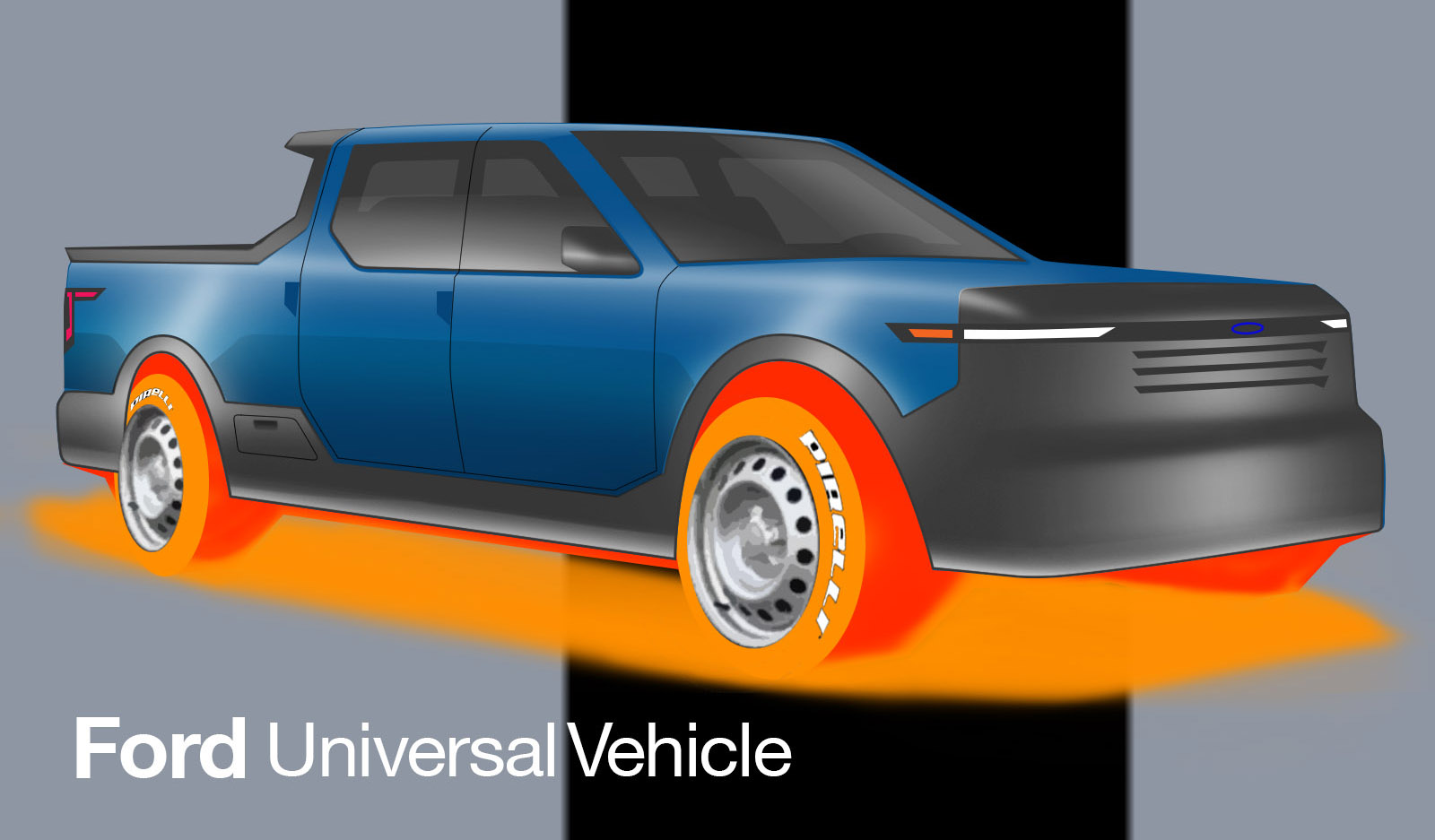
Moving around to the front, again I’ve kept it quite simple. I’ve imagined the light units as one integrated unit that wraps around the corner and incorporates the federally mandated marker lights. It might seem like a small thing, but a dollar or two saved soon adds up. There are some vents molded into the fascia to give a grill effect, but this is more for familiarity and to break up the expanse of unpainted plastic. At the base of the A-pillar, I’ve integrated the mirror housing into the sail panel that would normally occupy this part of the window. Mirrors are a major pain point when it comes to aerodynamics, and the US hasn’t legalized rear-view cameras yet, so this seems like one conceivable way to improve airflow and, again, reduce part count.
The Not $30k Version
Alright, that’s the $30k version. What might the one people actually buy look like? I’ve painted the cladding to match the body color and subtly simplified the front graphic. My thinking here is that retail customers (as opposed to business customers buying the cheap version) might want a slightly more sophisticated and modern appearance. Also, going by the one image we have from yesterday’s announcement (below), it looks like the new truck is going to have a remarkably simple front facia.
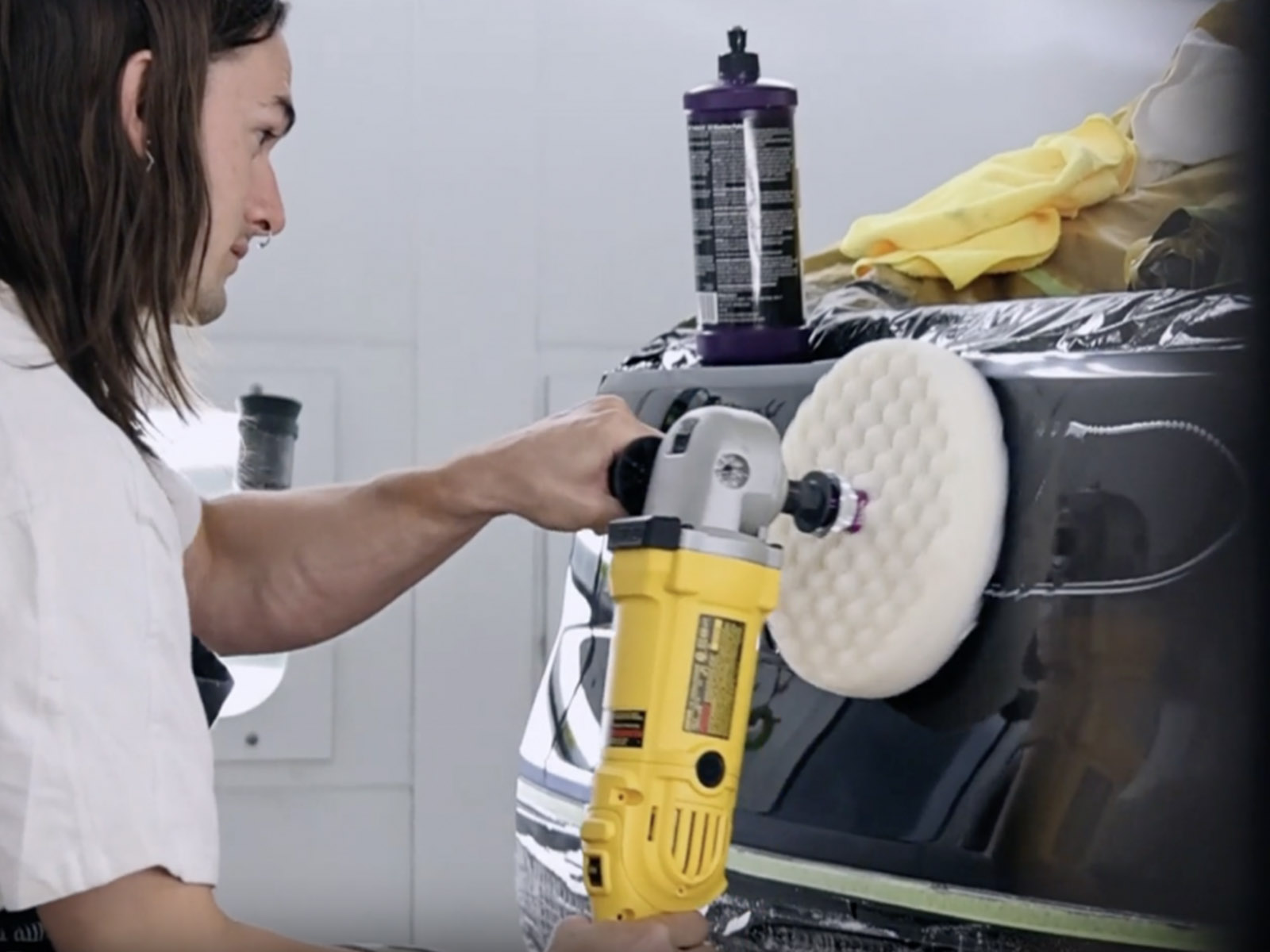
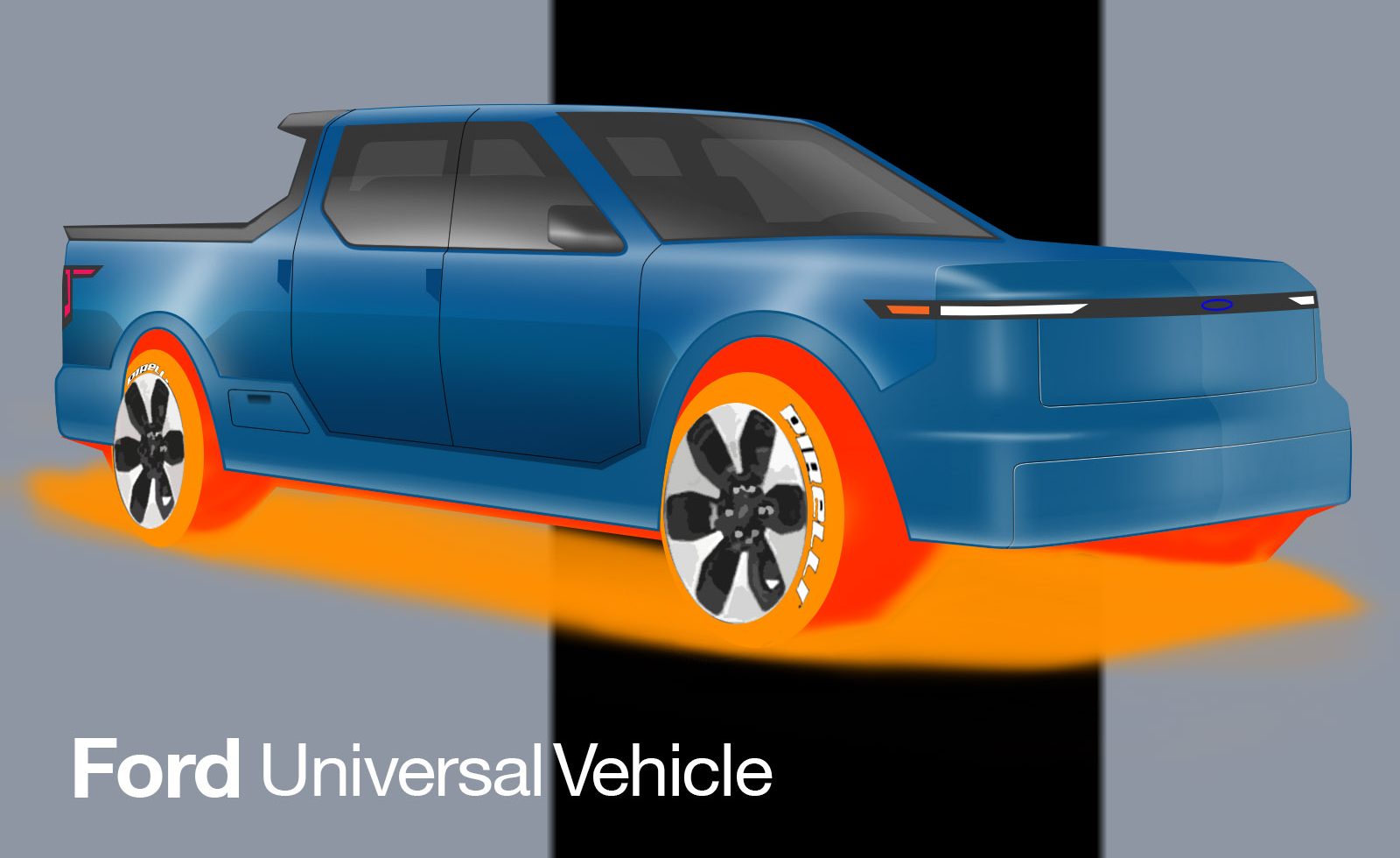
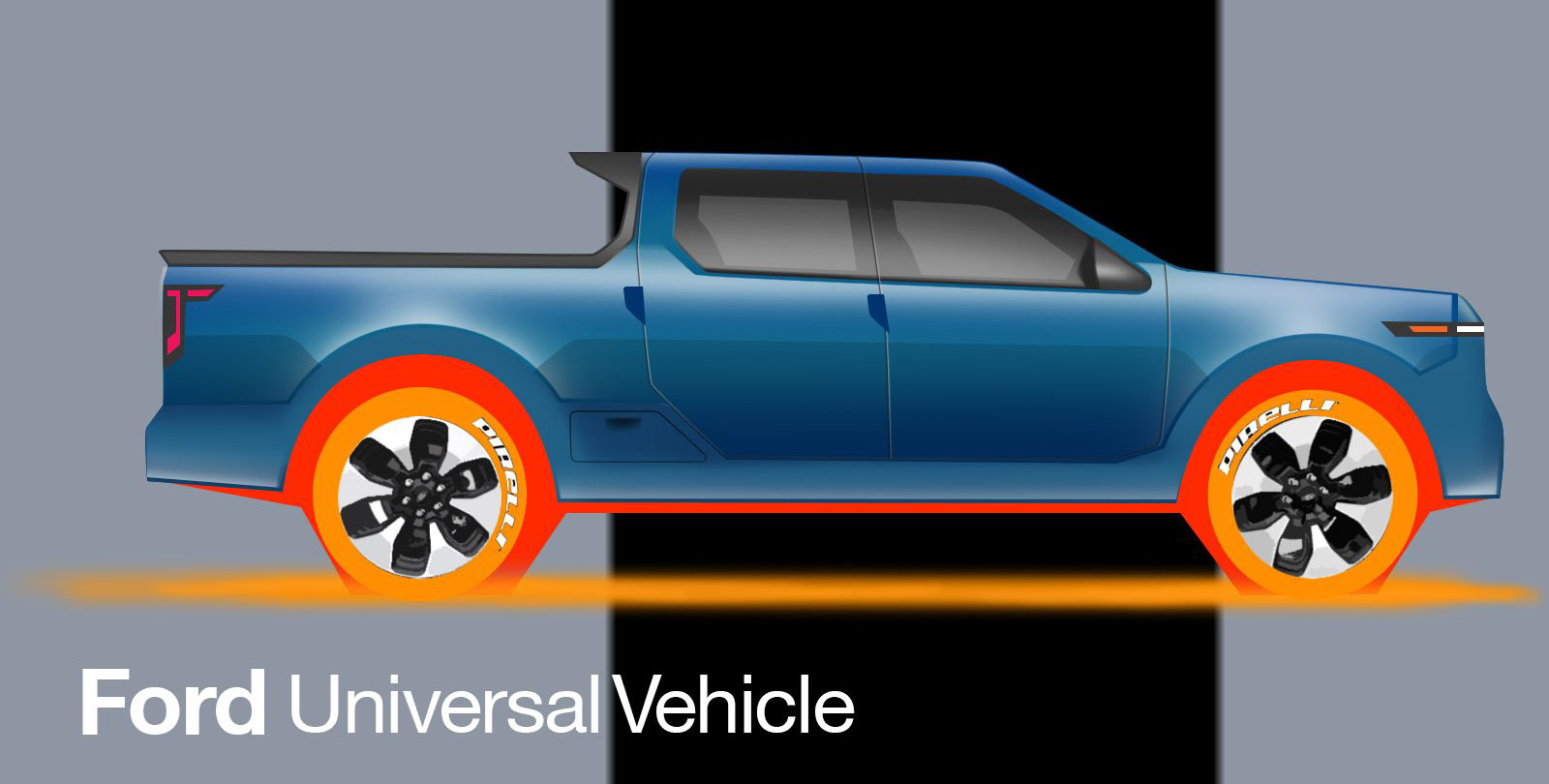
Ford hasn’t given us much to go on beyond teasing generalities, so this is all pure speculation. But hopefully it will give you an idea of the challenges they are going to face and how their truck might differ from the Slate that got everyone so worked up a few months ago. I’m sure if Ford can manage even half that amount of buzz, they will be more than happy.
And if their new truck isn’t for you, they’ve got three other models.
Source link

